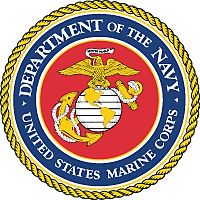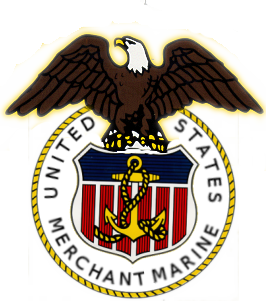by D.A. Levy, San Francisco Commandery
The Mare Island Naval Shipyard seems to stand forlorn and empty on the outskirts of Vallejo, California, to the northeast of San Francisco. Many of us remember when it was a beehive of activity with a dry dock and machine shops for submarines and surface ships alike. Today, new housing developments for civilians occupy land in what had been military housing. San Francisco Commandery Commander Tom Snyder is a docent for tours of historic buildings on the now closed base. The following account is based on a recent tour.
“Shipyards do not build ships. Ships do not fight battles.
It is the people who build ships, people who fight battles.” -- Mare Island Yardbird
On 15 January 1852, Secretary of the Navy Will A. Graham ordered a naval commission to select a site for a naval yard on the Pacific Coast. Commodore D. Sloat along with Commodore C. Ringgold, Simon F. Blunt, and William P. S. Sanger were appointed to the commission.
On 13 July 1852, Sloat recommended the island across the Napa River from the settlement of Vallejo located 25 miles northeast of San Francisco. When the United States purchased the island for $83,491 on 4 January 1853 from Lieutenant Commander William Pope McArthur, who had gone around the Horn to conduct a Northern California coastal survey, the military history of Mare Island began.
The Navy Yard, Mare Island.
As a result, in September 1854, when Commander David Glasgow Farragut and his family arrived on the island, Mare Island became the first United States Naval Base on the West Coast. Farragut had been sent west to personally oversee the building of a Navy Yard in support of the Pacific Squadron.
California Farmer and Journal of Useful Sciences –
23 November 1855
At this island also is the famous Dry Dock, now complete and in active use.
…We know the enterprises in every part of our State are gigantic, but those upon Mare Island, the site of the Navy Yard of California, are on such a scale of grandeur and beauty as we are desirous of seeing perfected, and it is the interest of every Californian to aid in carrying out these plans.
Hundreds are busily employed in digging down the hills and filing the valleys, and in laying the foundations of these mighty structures, wherein shall be constructed the material of which shall compose the future “Navy of the Pacific Coast;” and it may be that here shall be built the very ships that shall in future years be the defenders of the city of San Francisco from an invading foe.
The original drydock was a floating sectional dock, built in New York and brought around the Horn to California in the early 1850s. Construction of the permanent dry dock in the 1870s forced the removal - and eventual destruction - of this original historic floating drydock. On 14 August 1872, the Vallejo Evening Chronicle reported on the beginning of construction of drydock #1: “Ground was broken on August 13 for the dry docks.
The proposed location of the stone dry docks will necessitate the moving of the sectional docks downstream several hundred feet. Men are now engaged in drawing the timbers out of the boom and storing them in the timber shed.”
The twenty-three spacious, elegant residences of the commandant and other officers stand in a line upon a broad avenue, laid out in squares and ornamented with evergreens, oaks, and other stately trees from various parts of California. The result is a noble and prosperous appearance.
The great iron machine shop, with its wings, was designed as a splendid brick building twelve hundred feet in extent, and two stories high. The wooden machine shop is about eight hundred feet, with its wings, two stories and all other buildings in proportion. All was erected with care, of the best materials, and by the best mechanics.
During the time of Mare Island’s growth, writers indicated that they had seen no place where the science of arboriculture could be better displayed than at Mare Island. Under Commander Farragut, newspapers of the day reported “we can in faith look forward and anticipate that the Navy Yard of California shall occupy a proud position in the annals of the future of our country.”
Although Farragut dreamed of building the first naval vessel to be constructed in the west, authorization for the ship was not received until after he had left.
1859: The USS Saginaw, a four-gun, wooden-hulled, steam-driven, side-paddle-wheel warship launched 3 March 1859, was the first of more than 500 ships built and 1,227 repaired or overhauled at Mare Island Naval Shipyard during its 142-year history. The first dry dock (1872-91) constructed on the West Coast was built on the Island.
Such undertakings on Mare Island illustrated the nation’s effort to extend its naval power into the Pacific Ocean. To this day, Mare Island holds the record for building the destroyer USS Ward in 17 days during World War I.
1861: The longest lived of the clipper ships, Syren, was brought to Mare Island Navy Yard for $15,000 of repairs. Syren had struck Mile Rock two times while trying to sail out of the Golden Gate.
27 April 1861, Daily Alta California, San Francisco, California
The Syren Disaster.— The accident to the ship Syren, the pioneer of the new Boston line of packets, noticed in yesterday’s Alta. The utmost effort were made after she was towed to North Point, to keep her free, but to no purpose; she sank, and now lies in the mud with the tide ebbing and flowing in her. She is loaded chiefly with barley, in sacks, but had also hides, wool, copper ore and salmon. She will be discharged as rapidly as possible. What ails our pilots? Surely the exit to San Francisco harbor is not so awful a passage between Scylla and Charybdis that a small fleet of vessels must be lost is trying to get out…
1919: During the launching of the yard’s only battleship, USS California, the 32,000-ton dreadnaught slid from the building ways. The huge launching brakes designed to check the vessel’s speed across the channel failed to function property. A number of the cables running through the channels to the hull jammed and snapped; she broke free across Mare Island Channel towards Vallejo, swamping boats and the ferry slip in its wake. Locals describe the ship as “heading up Georgia Street.” No damage was done and no repair bill was ever submitted to the Navy.
During World War II, Mare Island Naval Shipyard swarmed with tens of thousands of yard workers and sailors. Lower Georgia was a 24-7 scene with some 100 bars, three dozen casinos (mainly small gambling joints in rear rooms or basements of bars) and a couple dozen brothels.
MARE ISLAND NAVAL CEMETERY
The Naval Cemetery is situated on a hillside overlooking the Napa River and Mare Island Strait. Nearly a thousand graves of sailors and Marines and family members are in the cemetery. The first recorded burial was in 1856. Burials include Francis Scott Key’s daughter, and numerous Navy and Marine Corps heroes, including three confirmed Medal of Honor recipients and six Russian sailors who served aboard the Bogatyr, the flagship of Admiral A. A. Popov’s Pacific Squadron during his 1863 visit to San Francisco Bay and Mare Island. Among the Russian, French, British, and Dutch sailors whose ships called at Mare Island in the 1800s, is an unmarked grave for “Mike the Bear,” a ship’s mascot.
Early in the morning of 13 June 1892, 15 crew members of the USS Boston were detailed to the ammunition depot to load projectiles with gunpowder. At 11:30am, a tremendous blast shook the ground as if from an earthquake. Bodies and debris rained down as far away as Starr’s Mill on the opposite side of Mare Island Strait. At the mill, every window was immediately blown out as the sky blackened with a dense cloud of smoke. While rescuers responded, explosions from bursting shells continued for half an hour. At the scene, burned and charred bodies and body parts were scattered over a wide area. Two men were pulled from the river alive by a rescue boat. All but three of the 15 men from Boston were dead. The three had massive burns: two of these died the same day, and one died after 26 hours.
Marines first arrived for duty in 1862 under the command of Major Addison Garland, who was the first officer to command the Marine barracks on the island.
On 15 April 1899, the number of men working on Mare Island was as follows: yards and docks-111; construction and repairs-306; steam engineering-195; equipment and recruiting-56; ordnance-16; navigation-4; provisions and clothing-20; total-708.
The base closed in 1996 and has gone through several redevelopment phases. It was registered as a California Historical Landmark in 1960, and parts of it were declared a National Historic Landmark District in 1975.
MARE ISLAND MUSEUM
Building 46 was built around the oldest structure on Mare Island. The cornerstone for the original building was laid on 23 February 1855. Once the pipe shop/smithery, Building 46 is now the Mare Island Museum. It’s an example of industrial Romanesque Revival architecture. The museum is a treasure trove of shipyard history. Call 707.557.4646 or 707.280.5742 for museum information.
ST. PETER’S CHAPEL
St. Peter’s Chapel on Mare Island is the oldest navy chapel in the nation and the Navy’s first interdenominational church, built in 1901 under the guidance of Chaplain McAllister. The twenty-nine stained glass windows were installed over a thirty year period to honor individuals and groups such as the “Women of the Navy and Marines.” Twenty five of the windows are known to be from the Tiffany Studios and, as such, the building is an historical landmark.
MARE ISLAND GOLF COURSE
Although the base has been closed for over 20 years, the golf course remains. The island’s first golf course was located on the site of the Marine parade grounds. Dating to 1892, it was the oldest golf course west of the Mississippi River. The fairways were dry and the “greens” were sand. The course was moved from the parade grounds to its current location overlooking the strait in 1914.
Submitted by Bob Hansen









